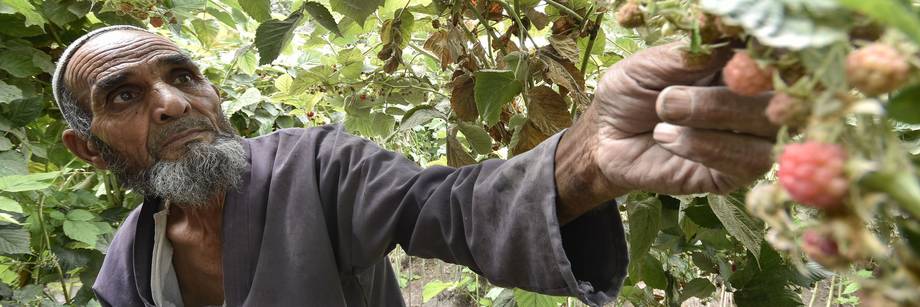The Environmental Land Management and Rural Livelihoods Project in Tajikistan
Tajikistan has an area of around 141,000 km2 (14,100,000 ha) of which about 90% is considered upland and mountainous. More than two thirds of the population is rural and dependent on 4.6 million ha of agricultural land, the majority of which is rain-fed pasture.
More than 90% of the total rangeland is degraded. All pasture lands of Tajikistan are strongly subject to erosion - with 89% of the summer pastures and 97% of winter pastures suffering from medium to strong erosion.
The Environmental Land Management and Rural Livelihoods Project (ELMRL) targets to enable rural people to build their productive assets in ways that sustainably improve natural resource management and build resilience to climate change in selected climate vulnerable sites. Main project activities include:
• Prevent or reduce soil erosion
• Increase vegetative cover through perennial crops and pasture
• Provide soil and moisture conservation
• Improve soil quality
• Improve water use efficiency
• Increase sustainable fodder or wood supply
• Increase sustainable renewable energy supply
• Extend integrated pest management
The EX-ACT Carbon Balance Appraisal underlines the importance and effectiveness of the envisaged actions for climate change mitigation, which thus provides an important secondary outcome of the livelihood targeted intervention. Over the full duration of analysis of 20 years, the project will lead to the mitigation of 2.5 million tCO2-e, which is equal to an impact of 3.3 tCO2-e per hectare and year. Most important project impacts thereby stem from the investments in agroforestry, pasture rehabilitation and afforestation measures.
Besides these mitigation focussed impacts, the project analysis further underlined the close link between mitigation and adaptation: Increased soil carbon levels, additional forest and other vegetative cover as well as further investments in natural capital have the multiple benefits of reducing water and wind erosion, increasing soil water holding capacity and conserving soil resources.

